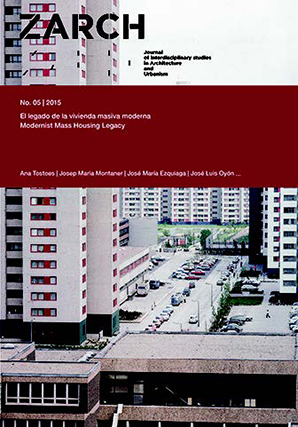Residential Housing in Kharkov (Ukraine), 1920-1935
DOI:
https://doi.org/10.26754/ojs_zarch/zarch.201559105Palabras clave:
Garden city, house-commune, residential combine, architectural constructivism, social hierarchy, linear cityResumen
This paper explores the evolution of residential housing approaches in Kharkov, the first capital of Soviet Ukraine, during the period from early 1920s till mid 1930s. The starting point of urban planning experiments was the implementation of the idea of the Garden City (mid 1920s). The building of the house-commune type (1925) and the emergence of a number of large housing estates, which formed a core of the social infrastructure for the new governmental complex, brought a shift in the former urban approaches. At last, the Socialist City (sotsgorod) as a new form of urban lifestyle was consolidated mainly in the late 1920s. Kharkov was one of the first cases, where it was ex- perimentally tested. The ‘socialist city’ model, continuing its existence in the post-war time, underwent significant morphological changes, which, nonetheless, did not alter its fundamental social functional meaning.





